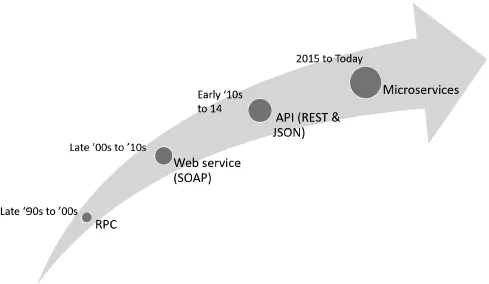
Microservices by Examples Using .NET Core
Using .NET Core
- English
- ePUB (mobile friendly)
- Available on iOS & Android
Microservices by Examples Using .NET Core
Using .NET Core
About this book
A book with lot of practical and architectural styles for Microservices using.NET Core Key Features
- Understand core concept of Microservices
- Understand various Microservices design patterns
- Build microservices application using real-world examples
- Deployment of microservices using Docker
- Microservices Orchestration using Azure Service Fabric
- Azure DevOps (CI/CD) using MSBuild
- Understand the concept of API Management
- Authentication/Authorization using JWT token for Microservices
- Integrating Microservices in Angular 6.0 Single Page Application.
- Dos and don'ts during integration
- Ensuring End to end testing
Description
This book predominately covers Microservices architecture with real-world example which can help professionals on case adoption of this technology. Following the trend of modularity in real world, the idea behind Microservice by Examples is to allow developers to build their applications from various independent components which can be easily changed, removed or upgraded. Also, it is relevant now because of enterprises are moving towards DevOps/ Modernisation, this book will emphasise on containers and Dockers as well. What You Will Learn
- Microservices and its Architecture
- Designing the microservice application layer
- Hands on Micro services development of Online Hotel Booking App
- Deployment of Microservices for App-Modernization at Scale with Docker
- Service Orchestration of Microservices using Azure Service Fabric
- Integrating various components
- Hands on Integration with API Management
- Testing Microservices
Who This Book Is For
This book is for.NET Core developers who are new to microservices and want to learn, understand the microservices architecture. Table of Contents
- An introduction to Microservices
- Micro services Architecture
- Designing the microservice application layer
- Hands on Micro services development of Online Hotel Booking App
- Deployment of Microservices for App-Modernization at Scale with Docker
- Service Orchestration of Microservices using Azure Service Fabric
- Integrating various components
- Hands on Integration with API Management
- Testing Microservices
- Extending application with logging
- What is next?
- About the Author
Biswa has done MCA from ICFAI university, a TOGAF certified. She has over 13 years of experience in Enterprise Software Services, Product Development & Management, evangelize and deliver new products. Drive the go-to-market strategy working closely with the sales team. Baishakhi Banerjee Baishakhi has completed MCA from Techno India affiliated under WBUT and is also an MCTS. She has over 13 years of experience in working with MS Technologies but for past couple of years, while working in application design and architecture, she has started working with other technologies too. Gaurav Aroraa Gaurav has done M.Phil in computer science. He is an MVP, life time member of Computer Society of India (CSI), Advisory member of IndiaMentor, certified as a scrum trainer/coach, XEN for ITIL-F and APMG for PRINCE-F and PRINCE-P. Gaurav is Open source developer, Founder of Ovatic Systems Private Limited.
Frequently asked questions
- Essential is ideal for learners and professionals who enjoy exploring a wide range of subjects. Access the Essential Library with 800,000+ trusted titles and best-sellers across business, personal growth, and the humanities. Includes unlimited reading time and Standard Read Aloud voice.
- Complete: Perfect for advanced learners and researchers needing full, unrestricted access. Unlock 1.4M+ books across hundreds of subjects, including academic and specialized titles. The Complete Plan also includes advanced features like Premium Read Aloud and Research Assistant.
Please note we cannot support devices running on iOS 13 and Android 7 or earlier. Learn more about using the app.
Information
CHAPTER 1
An Introduction to Microservices
| • | Understanding microservices concepts |
| • | Discussing monolithic and history behind it |
| • | Explaining concepts of web services, WCF, etc. |
| • | Discussing SOA |
| • | Discussing important concepts |
| • | Adopting microservices |
Understanding Microservices Concepts
What are Microservices
History of Microservices

Microservices are Modular and Independent
Microservices are Decentralized and Cross-functional
Microservices are Resilience
Microservices are Highly Scalable

Discussing Monolithic and History Behind it
| • | Presentation layer: Presentation (UI) layer in which user interacts with an application, all client-side logic, client-side validation related logics taken acre by this layer. |
| • | Business Logic layer: Business Logic layer contains all the logic related to business context, which is a middle layer communicating between Presentation and data access layer. |
| • | Data access layer: Data Access layer contains all the logic related to backend or Database. |
Table of contents
- Cover
- Microservices by Example Using .Net Core
- Copyright
- Contents
- Chapter 1: An Introduction to Microservices
- Architecting Microservice-Based Applications using Azure Container Service
- Design Patterns
- Testing the API
- Create a Deployment Group
- Service Fabric Installation and Environment Setup
- Sample Business Case